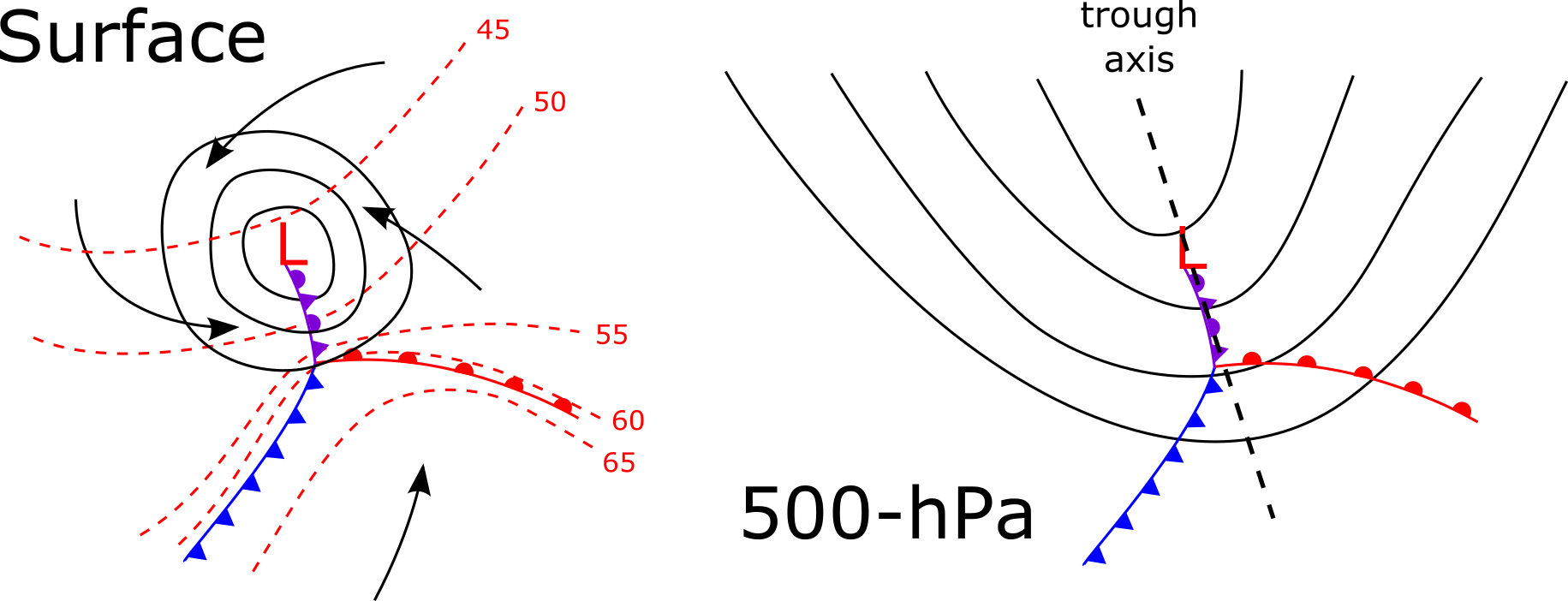15.6. Occlusion#
Near the end of the life cycle of a mid-latitude cyclone the cold air that has been on only the north side of the cyclone will now wrap completely around the center of the circulation (Fig. 15.3). This, in effect, cuts off the cyclone from the moist, tropical airmass that has been bringing energy into the system. This process is called occlusion (e.g., cyclone wrap-up). A result of the occlusion processes the cold front and warm front meet and the remaining wind shift (and possibly slight temperature gradient) can be defined an occluded front. At this point the cyclone may dissipate or form a new low-pressure center at the triple point of the cold front, warm front, and occluded front.

Fig. 15.4 Schematic representation of the occluded stage of a mid-latitude cyclone at the surface and 500 hPa with location of low-level fronts for spatial reference.#
Typically, around the time that there is no longer a westward tilt of the cyclone with height the surface system will occlude (Fig. 15.3). The cyclone is said to be vertically stacked at this point. Depending on the orientation of the cyclone, redevelopment may be possible at the triple point of the cold, warm, and occluded fronts. The redevelopment occurs frequently with storm systems, but eventually all systems will dissipate after an occlusion.
